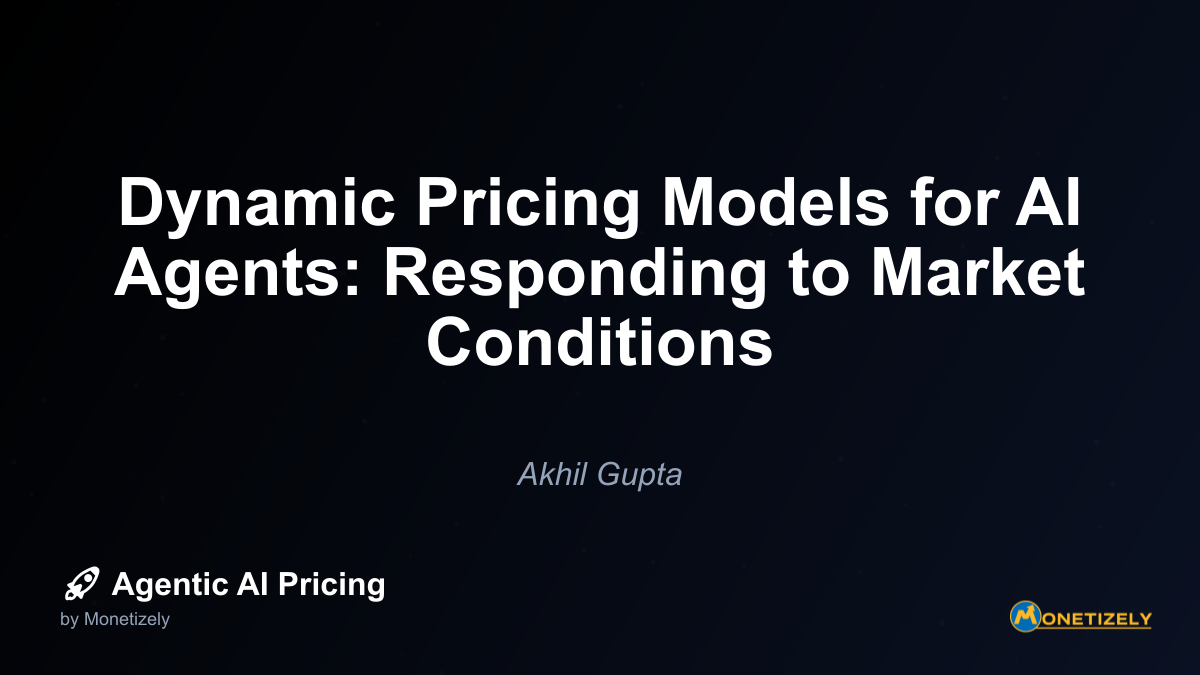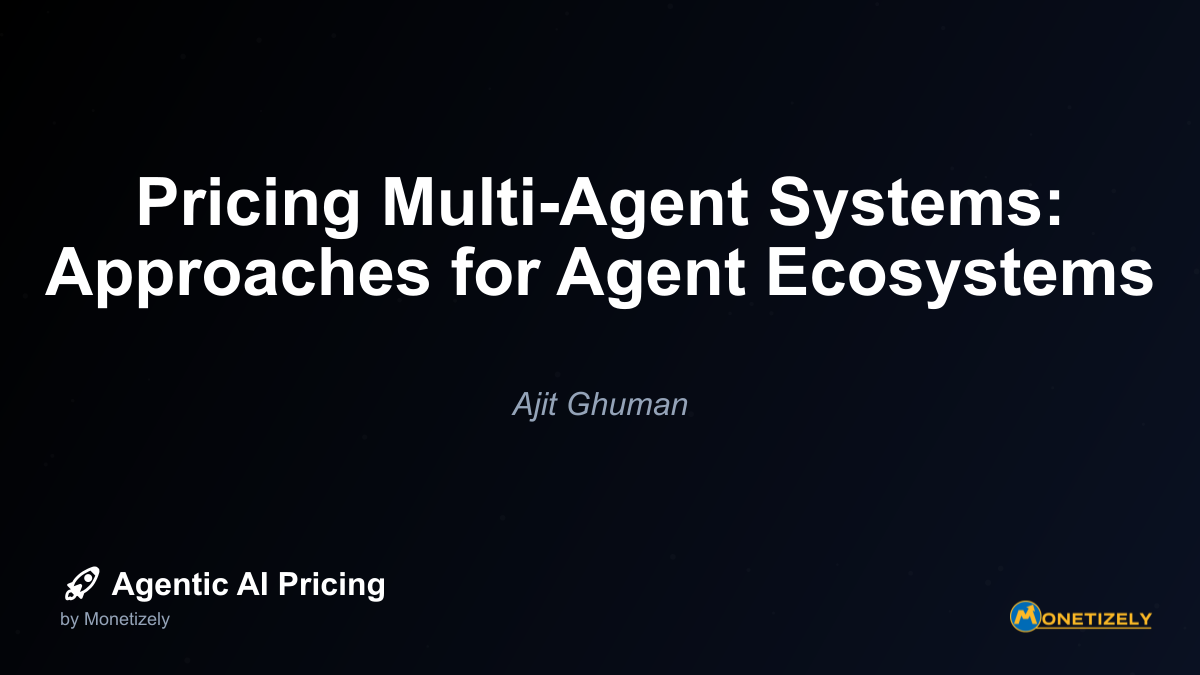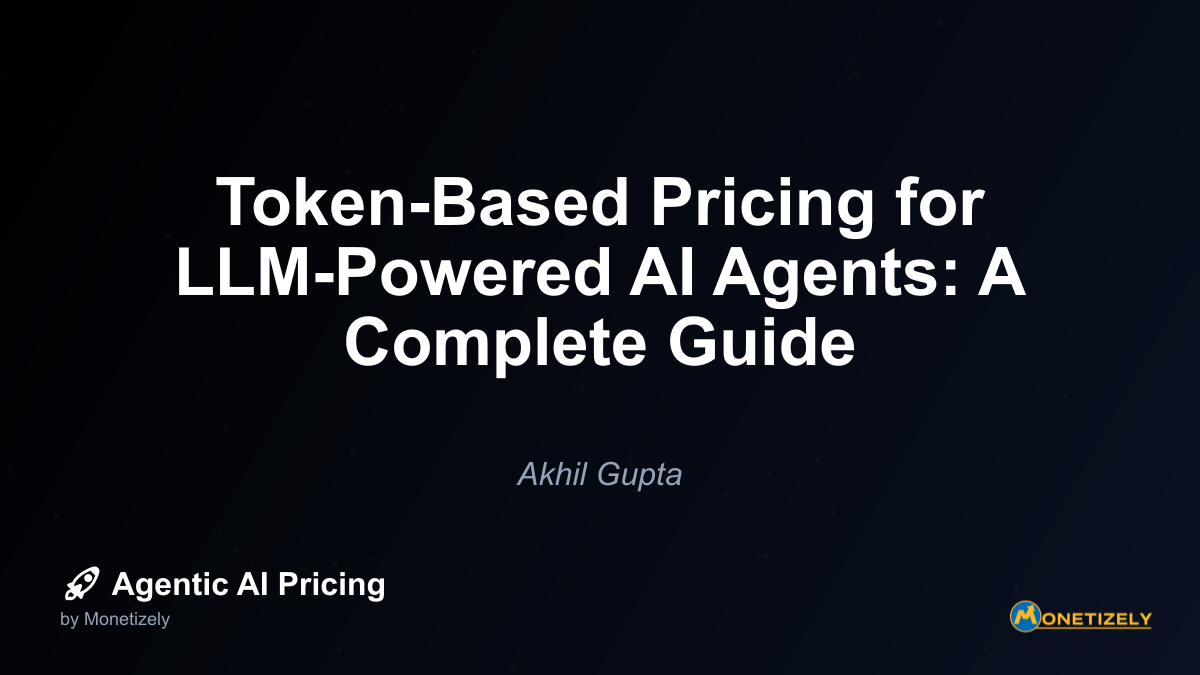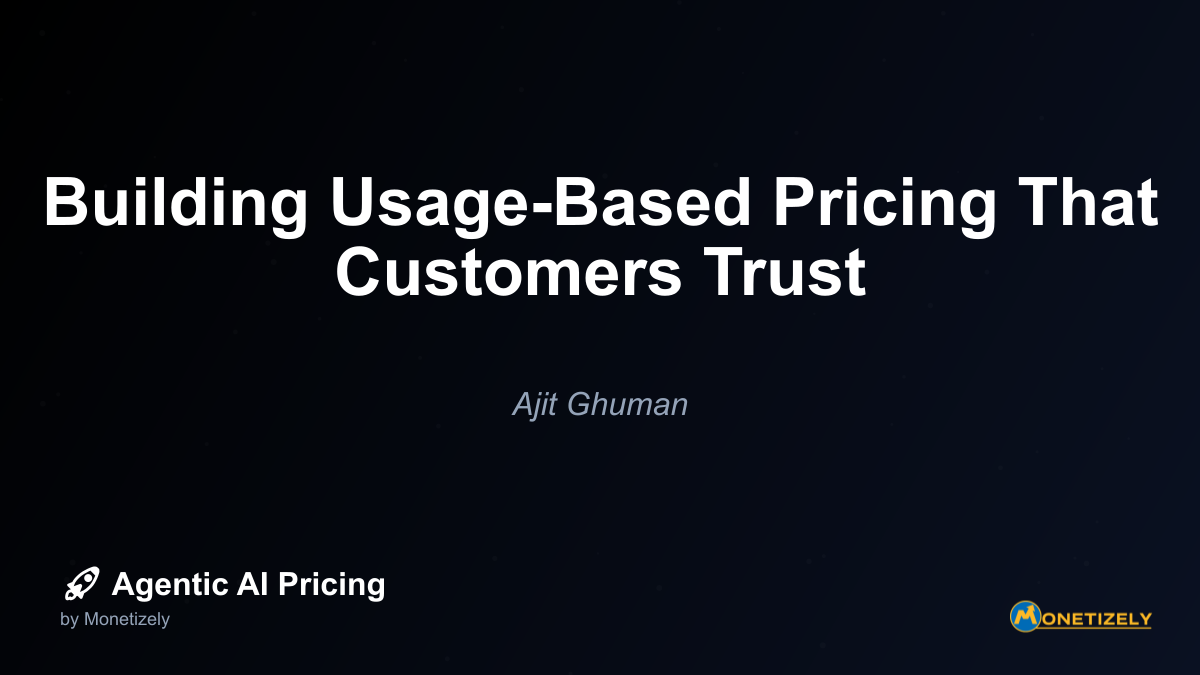· Akhil Gupta · AI Pricing Models · 5 min read
Pricing AI Research Partners vs. Production Agents
AI and SaaS Pricing Masterclass
Learn the art of strategic pricing directly from industry experts. Our comprehensive course provides frameworks and methodologies for optimizing your pricing strategy in the evolving AI landscape. Earn a professional certification that can be imported directly to your LinkedIn profile.
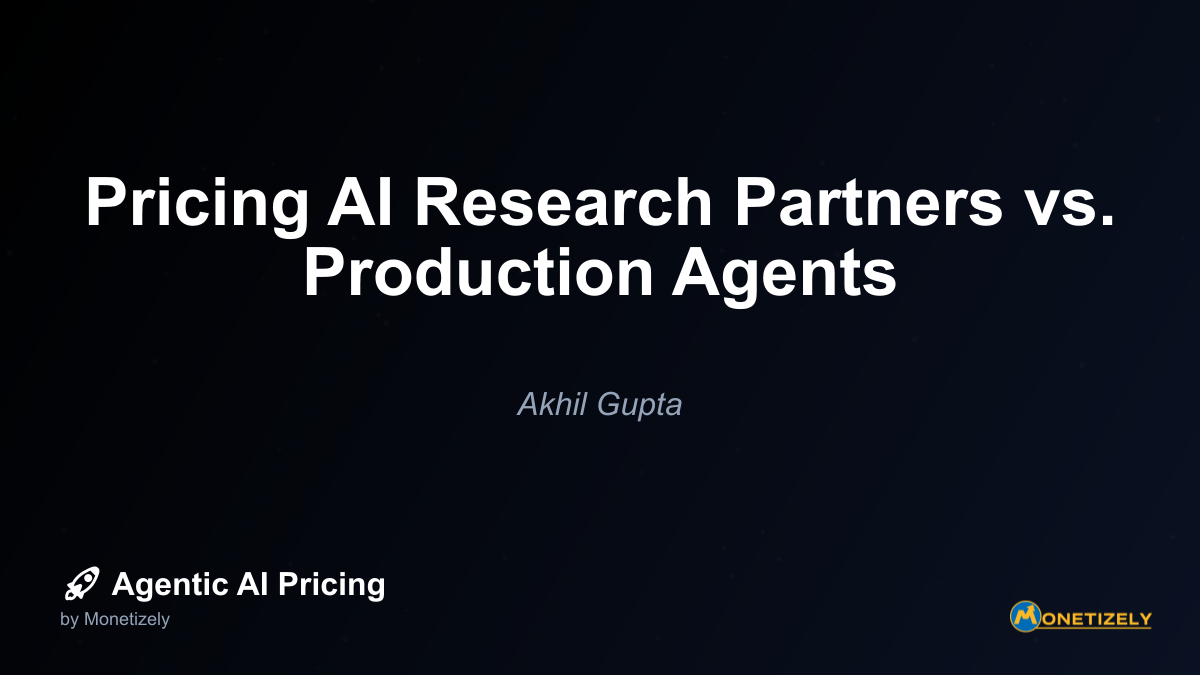
Case Study: Transitioning from Research to Production
Consider the example of a natural language processing system initially developed as a research partner for pharmaceutical companies to analyze scientific literature. The initial pricing model included:
- Base subscription fee for access to the core system
- Per-user licensing for research team members
- Usage-based components for specialized analysis tasks
- Premium fees for integration with proprietary datasets
As the system matured and demonstrated consistent ability to identify promising research directions, the company developed a production version that could autonomously:
- Monitor new publications and identify relevant findings
- Maintain comprehensive knowledge graphs of compound interactions
- Generate and prioritize drug candidate hypotheses
- Design preliminary screening experiments
This transition to production capabilities required a corresponding evolution in pricing strategy:
- Performance-based components tied to successful drug candidates
- Outcome-based fees for research time reduction
- Risk-adjusted pricing reflecting the higher stakes of autonomous operation
- Tiered pricing based on the complexity of research domains
This evolution demonstrates how pricing strategies must adapt as AI systems move from research partnership to production autonomy, reflecting the changing value proposition, risk profile, and operational requirements.
Strategic Recommendations for AI Providers
For organizations developing and marketing AI systems, several strategic pricing recommendations emerge:
1. Clearly Differentiate Research and Production Offerings
Avoid the common pitfall of blurring the lines between research and production capabilities. Clearly differentiate:
- Expected levels of human oversight
- Performance guarantees and reliability metrics
- Appropriate use cases and deployment scenarios
- Risk management and liability considerations
2. Develop Stage-Appropriate Pricing Models
Match pricing structures to the development stage and capability level of AI systems:
- Early research partners benefit from simple subscription models that encourage exploration
- Maturing systems can incorporate usage-based components as patterns emerge
- Production-ready systems should include performance-based elements tied to business outcomes
- Fully autonomous agents can support more sophisticated risk-sharing and outcome-based models
3. Build Value-Based Pricing Narratives
Develop clear value narratives that justify pricing based on economic impact rather than technical capabilities:
- For research partners, focus on acceleration of discovery, access to expertise, and enhanced human productivity
- For production agents, emphasize reliability, consistency, scalability, and direct business outcomes
- Quantify value delivery in customer-relevant terms rather than technical specifications
- Provide ROI calculators and value assessment tools appropriate to each system type
4. Implement Appropriate Measurement Systems
Develop robust measurement and attribution systems that support your pricing model:
- For research partners, track engagement metrics, insight generation, and contribution to outcomes
- For production agents, implement detailed performance monitoring, outcome tracking, and attribution models
- Provide customers with transparent reporting on value delivered
- Establish clear performance benchmarks and improvement metrics
Strategic Recommendations for AI Purchasers
Organizations purchasing AI systems should consider several factors when evaluating pricing models:
1. Align Pricing with Intended Use Cases
Ensure the pricing model aligns with your specific use cases and deployment scenarios:
- Research-focused applications benefit from predictable subscription pricing that encourages exploration
- Production applications should include performance components that align vendor incentives with your business outcomes
- Mixed-use scenarios may require hybrid models with different components for different use patterns
2. Consider Total Cost of Ownership
Look beyond the base pricing to understand the total cost of ownership:
- Integration costs and technical requirements
- Ongoing management and oversight requirements
- Training and change management expenses
- Risk mitigation and compliance costs
3. Evaluate Risk-Sharing Mechanisms
Assess how pricing structures allocate risk between you and the AI provider:
- Performance guarantees and service level agreements
- Liability provisions and limitation clauses
- Compensation for errors or performance failures
- Continuous improvement commitments
4. Plan for Evolution
Consider how pricing will evolve as systems mature and your usage patterns change:
- Scalability of pricing as deployment expands
- Transition paths from research to production usage
- Long-term cost projections and budget planning
- Vendor commitment to pricing stability
Looking Ahead: Future Trends in AI Pricing
As AI technology continues to evolve, several emerging trends will shape pricing strategies for both research partners and production agents:
1. Increasing Granularity in Value Attribution
Advanced analytics will enable more precise attribution of value to AI contributions, supporting more sophisticated outcome-based pricing models that accurately reflect the system’s impact.
2. Ecosystem-Based Pricing
As AI systems increasingly operate within complex ecosystems of human and machine intelligence, pricing models will evolve to reflect the value of integration, interoperability, and ecosystem participation.
3. Capability-Based Differentiation
The market will increasingly differentiate between commodity AI capabilities and specialized, high-value capabilities, with pricing models that reflect this differentiation rather than treating AI as a monolithic technology.
4. Risk-Adjusted Pricing Sophistication
As understanding of AI risks matures, pricing models will incorporate more sophisticated risk-adjustment mechanisms that precisely align costs with specific risk profiles and mitigation measures.
Conclusion
The distinction between AI research partners and production agents represents a fundamental divide in how AI systems create value, manage risk, and operate within organizations. This distinction must be reflected in pricing strategies that align with the unique characteristics of each system type.
For research partners, pricing should emphasize access to capabilities, knowledge, and exploratory potential, typically through subscription models with appropriate usage-based components. For production agents, pricing should reflect direct operational value, reliability requirements, and risk profiles, often through performance-based models with appropriate risk-adjustment mechanisms.
As AI systems continue to evolve and mature, pricing strategies must evolve accordingly, transitioning from simpler models appropriate for exploratory research tools to more sophisticated approaches that reflect the higher value and higher stakes of autonomous production agents.
Organizations that develop thoughtful, stage-appropriate pricing strategies for their AI offerings will be better positioned to communicate value, align incentives, and build sustainable business models in this rapidly evolving technological landscape.
For a deeper exploration of pricing AI agents based on skill complexity, or to understand outcome-based versus time-based pricing for AI services, additional resources are available to guide your AI pricing strategy development.
Co-Founder & COO
Akhil is an Engineering leader with over 16+ years of experience in building, managing and scaling web-scale, high throughput enterprise applications and teams. He has worked with and led technology teams at FabAlley, BuildSupply and Healthians. He is a graduate from Delhi College of Engineering and UC Berkeley certified CTO.
Pricing Strategy Audit
Let our experts analyze your current pricing strategy and identify opportunities for improvement. Our data-driven assessment will help you unlock untapped revenue potential and optimize your AI pricing approach.

